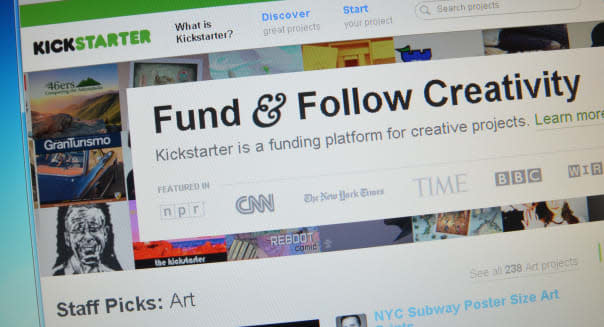Does America Still Need a National Endowment for the Arts?

For a government agency that gets about as much funding in a year as Lockheed Martin (LMT) gets paid to build a single jet fighter for the Pentagon, the National Endowment for the Arts sure does catch a lot of flak.
In 2013, the NEA received less than $139 million in funding. That's only a bit more than Lockheed charges for one of its top-of-the-line F-35 stealth fighter jets. And in its nearly 50-year history, the NEA has never received more than $176 million in a single annual budget. That's less than Lockheed used to charge for one of its F-22s.
So what's all the fuss about?
The Argument Against Funding Art
Established in 1965 to provide public funding for arts education, painting, dance, music, literature and other forms of art -- and the museums, theaters and opera houses that show them -- the NEA has been subject to continual attack by congressional budget-cutters since the early 1980s.
Critics of the agency argue that taxpayer funds shouldn't be used to support nonessential activities like the arts. They object particularly to paying for "art" that offends the sensibilities of the taxpayers who pay for it. (Witness the controversies over NEA-funded exhibitions by photographer Robert Mapplethorpe and artist Andres Serrano).
Of course, opinions will always differ on whether public funds should be used to fund private art. Defenders of the practice might even argue that these funds must be available, because art might never be created if it lacks financial support.
But what if we could sidestep all of this controversy? What if there's no need for an NEA at all?
The Solution?: Kicking Government out of Art
As it turns out, artists may not need the NEA anymore. They may be able to attract the funds they need to support their work with crowdfunding. In fact, they're doing this already.
Perry Chen, founder of the crowdfunding website Kickstarter, told The Washington Post earlier this year that since Kickstarter's beginning in 2009, "over $600 million in arts projects" have been funded through his website. %VIRTUAL-article-sponsoredlinks%Spread over the five years of Kickstarter's existence, that was close to 80 percent of funds allocated to the NEA.
Indeed, Kickstarter is almost certainly bigger than the NEA today. If you consider "design and video-related" projects to constitute art, then in 2012, artists attracted $323.6 million in funds from Kickstarter. That's more than twice the NEA's $146 million budget for the year. It's money going to projects big -- like Zach Braff's planned 2014 production of "Wish I Was Here," and small -- like the Hip-Hop Word Count database of song lyrics that opened in the Museum of Modern Art in 2011.
What It Means to You
So an argument can be made that with the advent of Kickstarter, there's really no need for the NEA anymore -- that taxpayers should no longer be footing the bill for the agency's multimillion-dollar budget, or paying the salaries of its 100-plus government employees.
Sure, it's true that the NEA has always played a minor role in funding the arts. The Post points out that in 2011, for example, "individuals contributed $13 billion to arts and cultural charities." The NEA's budget amounted to just 1 percent of that. But even so, it's not every artist who can tap that $13 billion stream in private funding. Unless a new artist knows a donor with deep pockets, or otherwise has some kind of "in" with a source of private funds, it's entirely possible that the NEA would offer the best chance of funding.
But now that Kickstarter is here, you really don't need to know anyone to get funding for an arts project. Say you need to raise $10,000 to open an arts exhibition. Rather than find an arts-loving sugar daddy, or butter up Uncle Sam for a government grant, all you need to do today is convince 1,000 of your fellow taxpayers that your idea is good enough to be worth $10 apiece to fund it. That's only 0.0003 percent of the population, and shouldn't be out of the realm of possibility for any halfway decent idea.
Of course, if your "art" is complete and utter dreck, it's still going to be hard to find funding, even through Kickstarter. But then again, that's why people were objecting to the NEA in the first place.
Motley Fool contributor Rich Smith lives too far away to have visited the Kickstarter-funded exhibit at MoMA, but he'll probably go see Zach Braff's new Kickstarter-funded flick. Or at least rent it on Netflix. The Motley Fool owns shares of Lockheed Martin.

